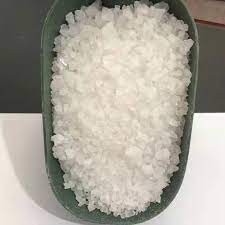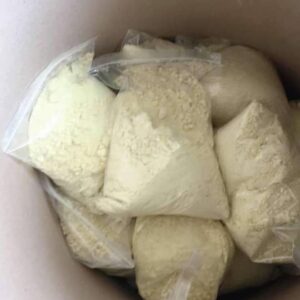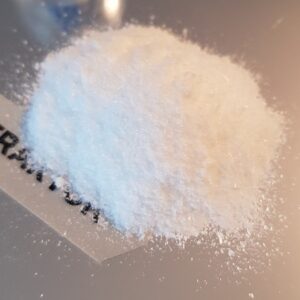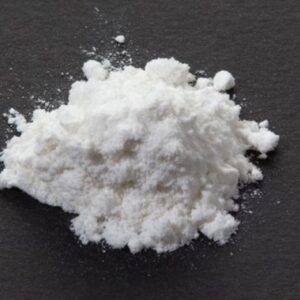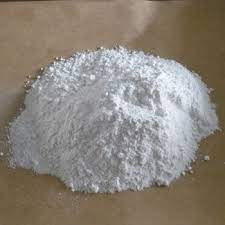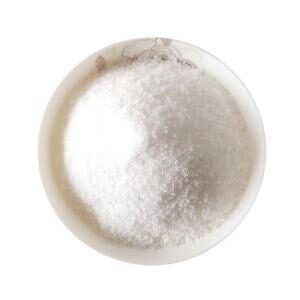Buy 2-Fluorodeschloroketamine (2-FDCK) Online – CAS 111982-50-4
Introduction
2-Fluorodeschloroketamine (2-FDCK) is a dissociative arylcyclohexylamine compound structurally related to ketamine. It has become increasingly relevant in analytical chemistry, forensic toxicology, and pharmacological research due to its emergence as a novel psychoactive substance (NPS).
Though never approved for medical use, 2-FDCK is available for licensed laboratories and certified reference material providers for chemical analysis, receptor-binding studies, and forensic validation.
This article provides a detailed overview of 2-FDCK’s chemical properties, analytical identification, regulatory framework, and laboratory safety, optimized for researchers, forensic professionals, and compliance officers.
⚠️ Note: 2-FDCK is strictly for research and analytical purposes. Unauthorized possession or use is illegal.
Chemical Profile and Background
2-FDCK is a fluoro-substituted analogue of deschloroketamine, with the chlorine atom replaced by fluorine on the phenyl ring. This modification changes its lipophilicity, receptor affinity, and metabolic profile, making it useful as a research and forensic reference compound.
| Property | Details |
|---|---|
| Chemical Name | 2-Fluorodeschloroketamine |
| Abbreviation | 2-FDCK |
| Synonyms | 2-F-DCK, Fluoroketamine, 2′-Fl-2-Oxo-PCM |
| CAS Number | 111982-50-4 |
| Molecular Formula | C13H16FNO |
| Molecular Weight | 221.27 g/mol |
| IUPAC Name | 2-(2-Fluorophenyl)-2-(methylamino)cyclohexanone |
| Chemical Class | Arylcyclohexylamine |
| Physical Appearance | White to off-white crystalline powder |
| Melting Point | 96–99 °C |
| Solubility | Ethanol, methanol, chloroform, DMSO |
| Purity (Research Standard) | ≥98% HPLC-verified |
| Storage | 2–8 °C, sealed, protected from light and moisture |
| Intended Use | Analytical reference and laboratory research only |
This profile supports laboratory method validation, database inclusion, and quality control documentation.
Analytical and Forensic Applications on 2-FDCK/ 2-Fluorodeschloroketamine/2
2-FDCK frequently appears in toxicological screenings and forensic casework involving dissociative substances. Laboratories use it to differentiate between ketamine analogues and validate detection methods.
Key Analytical Techniques
| Technique | Purpose |
|---|---|
| GC-MS (Gas Chromatography–Mass Spectrometry) | Detects characteristic ion fragments (base peak m/z 125–139) |
| LC-MS/MS (Liquid Chromatography–Tandem Mass Spectrometry) | Quantifies trace concentrations in biological or environmental samples |
| FTIR (Fourier-Transform Infrared Spectroscopy) | Confirms functional groups and fluorine substitution |
| NMR (Nuclear Magnetic Resonance) | Verifies molecular structure and substitution sites |
| HPLC (High-Performance Liquid Chromatography) | Confirms purity in certified reference materials |
Forensic Utility:
- Differentiates 2-FDCK from ketamine, deschloroketamine (DCK), and fluoroketamine isomers
- Supports court-admissible evidence in NPS casework
- Provides analytical reference for emerging dissociative analogues
Research and Laboratory Availability
2-FDCK is commercially available only to accredited laboratories and licensed research institutions in controlled quantities (typically 10–100 mg).
Authorized Research Applications
- Forensic toxicology: Method validation for LC-MS/MS and GC-MS
- Academic pharmacology: NMDA receptor antagonism studies
- Analytical chemistry: Comparative studies of arylcyclohexylamine analogues
- Public health research: Monitoring emerging dissociatives in seized samples
Supplier and Compliance Requirements
- Certificate of Analysis (CoA)
- Safety Data Sheet (SDS)
- Verified purity via HPLC/GC
- Batch traceability under ISO/IEC 17025 standards
Purchasing from certified reference standard providers ensures both scientific reliability and regulatory compliance.
Legal and Regulatory Framework
While 2-FDCK is not universally scheduled, many countries regulate it under analogue laws, psychoactive substance frameworks, or controlled drug legislation.
| Region | Legal Status | Reference |
|---|---|---|
| United States | Controlled under Federal Analogue Act | DEA Controlled Substances Act |
| United Kingdom | Class B substance | Misuse of Drugs Act 1971 |
| European Union | Monitored NPS | EMCDDA, national analogue regulations |
| Canada | Schedule I analogue | Controlled Drugs and Substances Act |
| Australia | Schedule 9 (Prohibited) | Poisons Standard 2025 |
| Japan | Designated Substance | Ministry of Health, Labour, and Welfare |
Important: Unauthorized handling, synthesis, or distribution is illegal. Licensed researchers must maintain strict inventory, reporting, and storage protocols.
Safety and Laboratory Handling
2-FDCK should be treated as a potentially neuroactive and hazardous chemical.
Recommended Safety Measures
- Handle in certified fume hoods
- Wear nitrile gloves, goggles, and lab coats
- Avoid inhalation, ingestion, or skin contact
- Dispose of residues via approved chemical waste systems
- Maintain incident logs and emergency response plans
Exposure symptoms may include dizziness, nausea, or transient disorientation. Proper PPE, ventilation, and handling protocols are critical.
Research Ethics and Data Integrity
Research institutions studying 2-FDCK should:
- Follow Good Laboratory Practice (GLP)
- Obtain IRB/Ethics Committee approval where applicable
- Maintain transparent and reproducible data
- Share validated findings with public health and toxicology networks
Responsible research supports detection technology advancement, scientific understanding, and evidence-based policy on NPS.
2-Fluorodeschloroketamine (2-FDCK) Potential Research Applications
| Application | Notes |
|---|---|
| Neuroplasticity | May enhance brain adaptability; potential for neurological disorder studies |
| Anxiety & Depression | Possible modulation of serotonin and dopamine receptors |
| Addiction Treatment | Could reduce cravings and relapse potential |
| Pain Management | Analgesic effects through modulation of pain perception and inflammation |
⚠️ 2-FDCK is a research chemical and has not been approved for medical use. Caution and professional supervision are mandatory.
2-Fluorodeschloroketamine (2-FDCK) Conclusion
2-Fluorodeschloroketamine (2-FDCK) is a valuable forensic and research reference compound. When handled ethically and within licensed laboratory conditions, it supports:
- Advanced forensic toxicology
- Analytical method development
- Pharmacological research on dissociative NMDA antagonists
- Public health monitoring of emerging NPS
Key Takeaways
- 2-FDCK is strictly a research-grade dissociative
- Used exclusively in forensic, analytical, and pharmacological research
- Internationally regulated, legal only in licensed research contexts
- Requires strict safety protocols and GLP compliance
- Supports method validation, toxicology studies, and NPS surveillance

